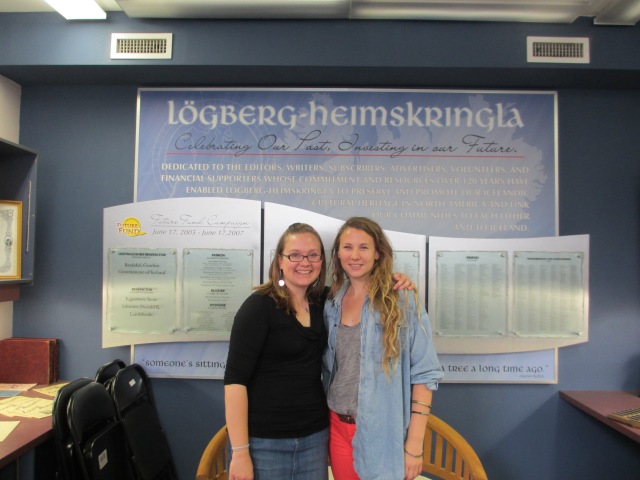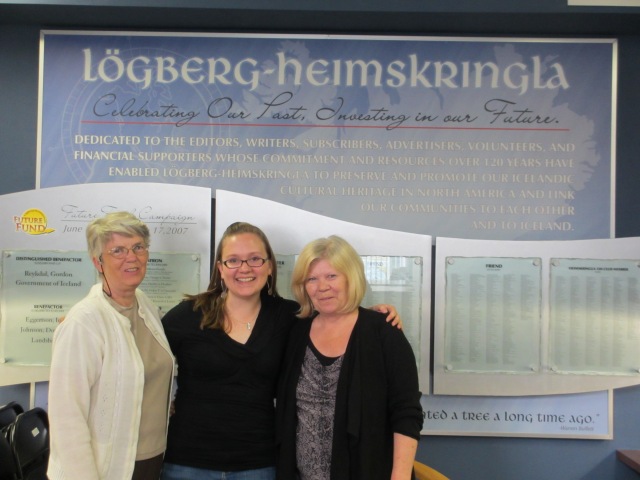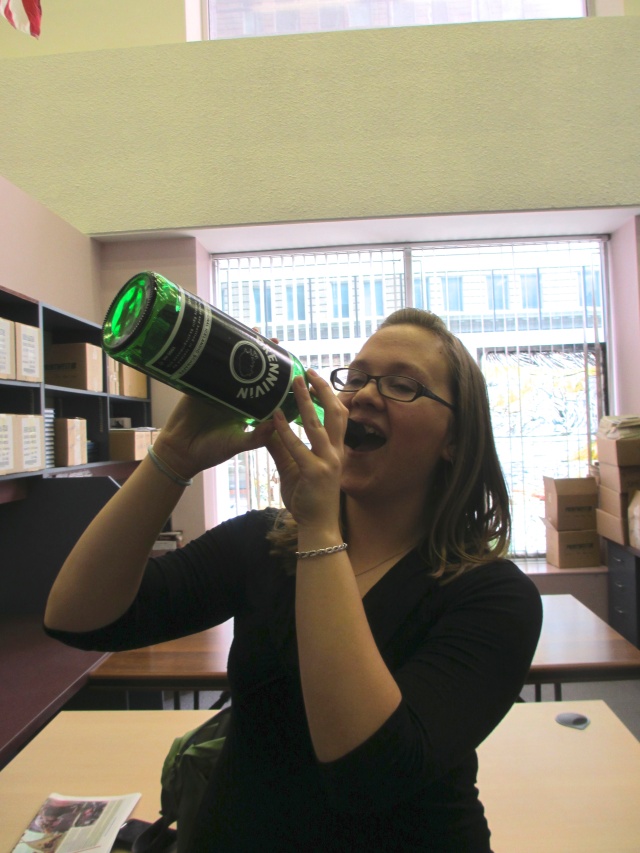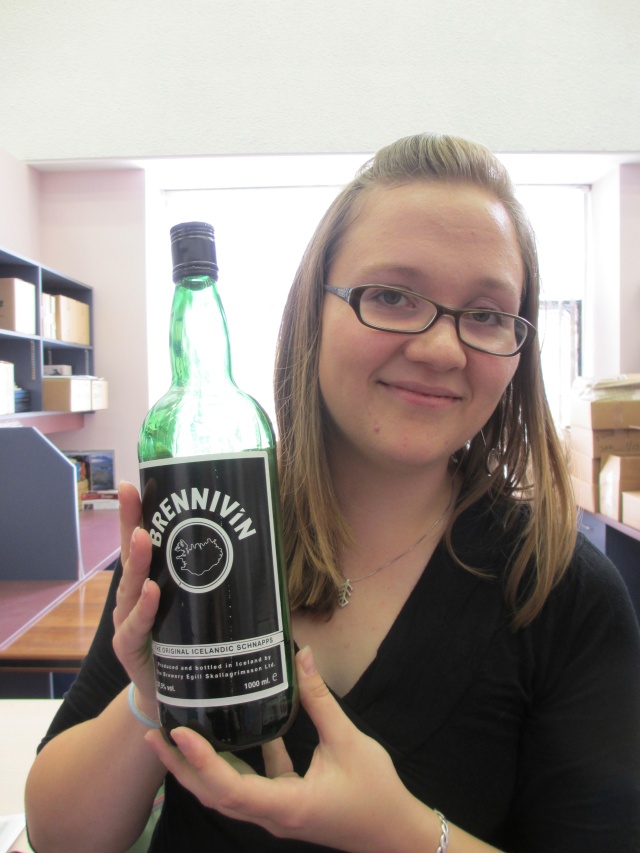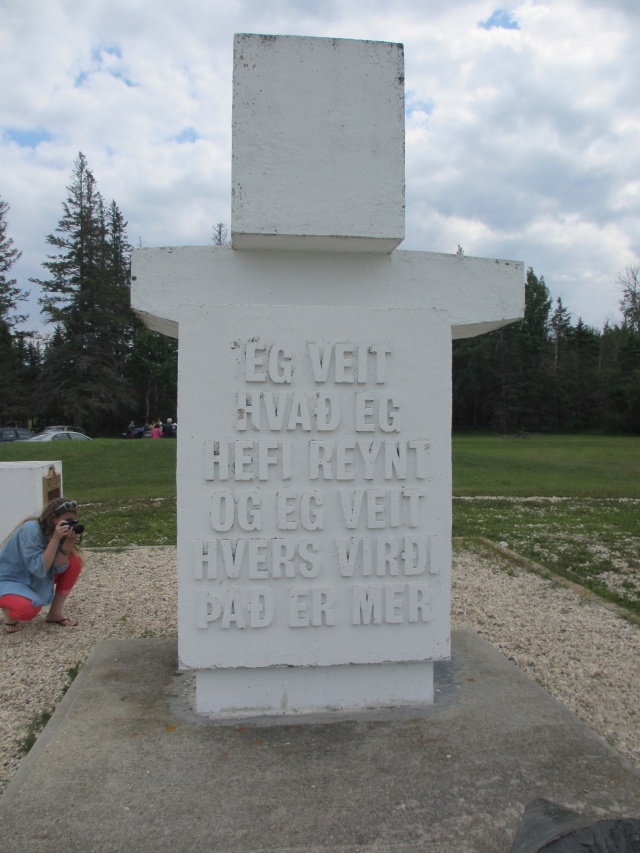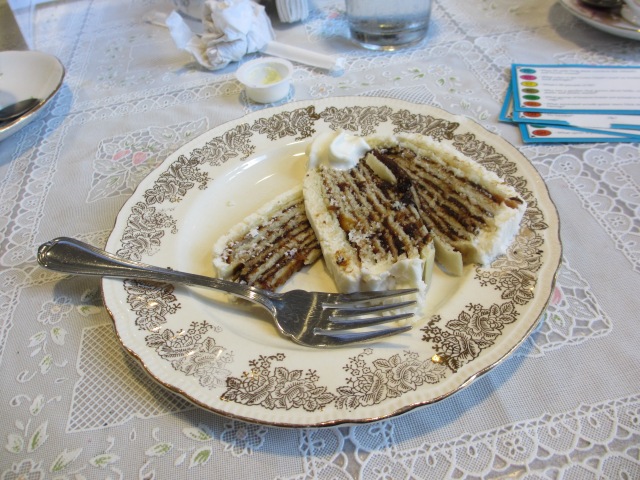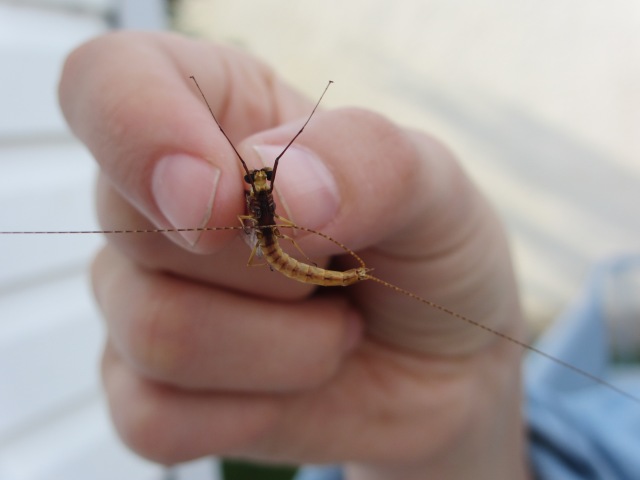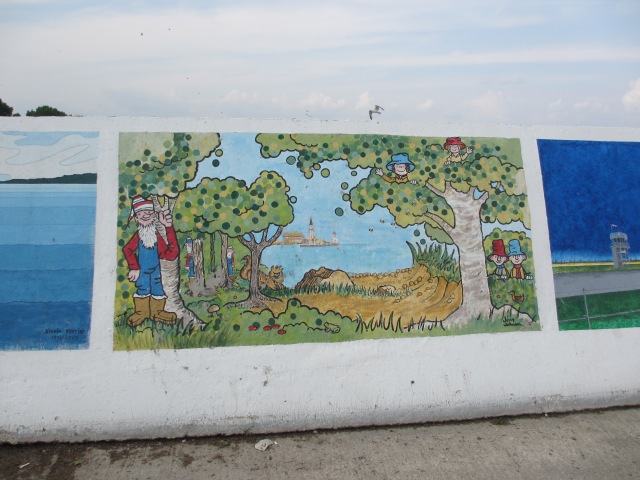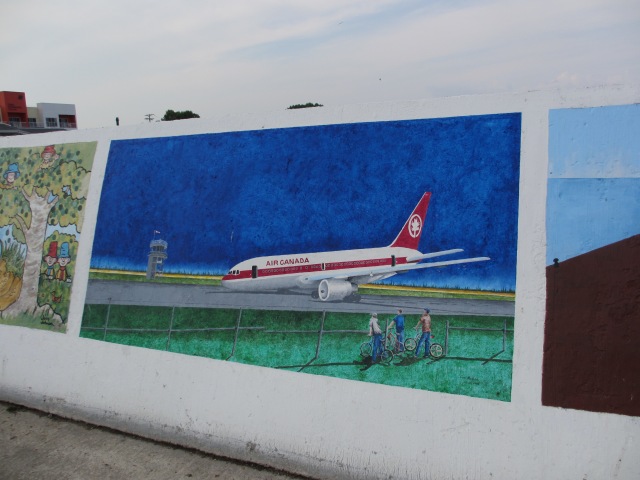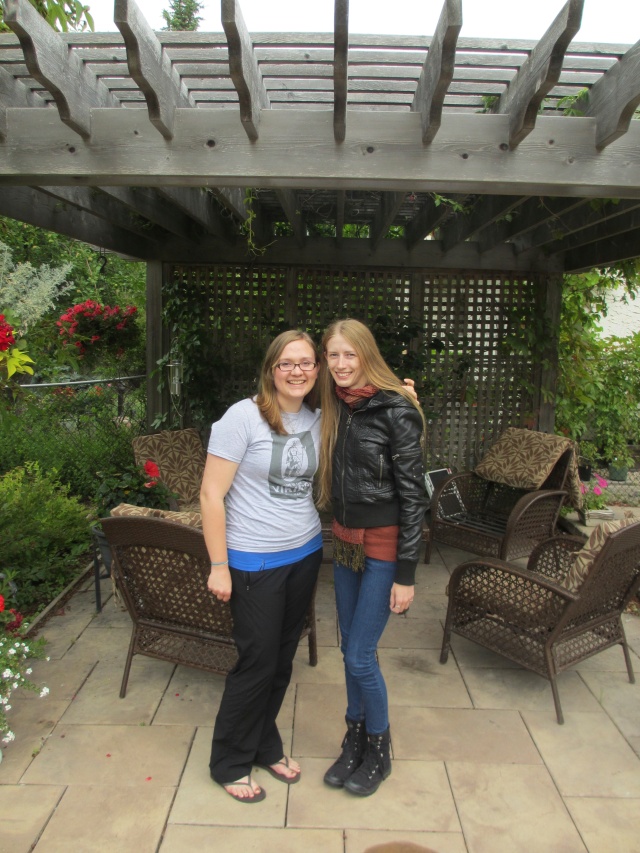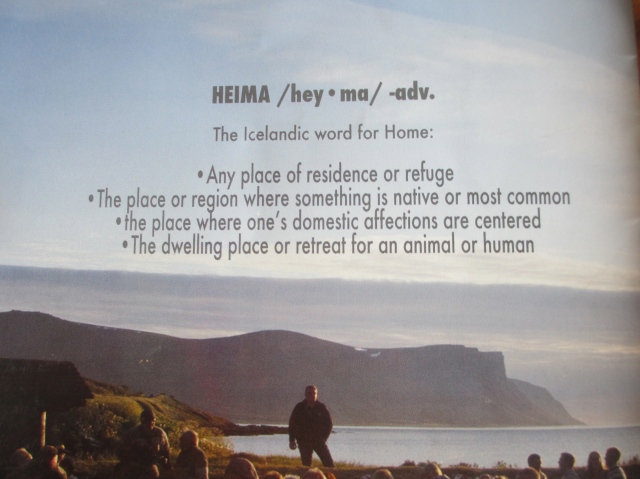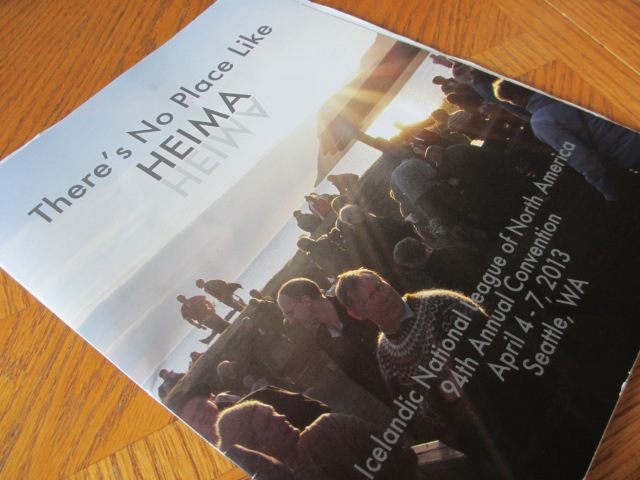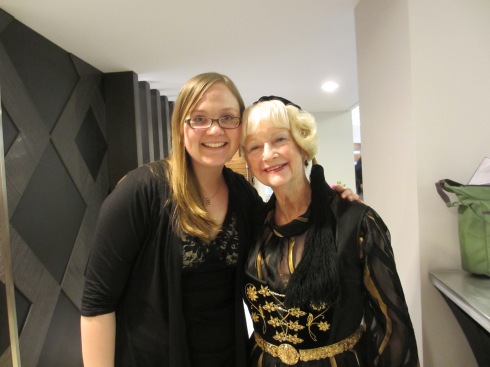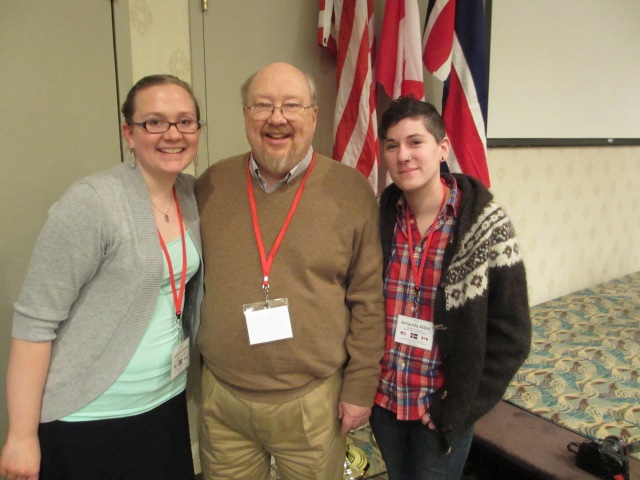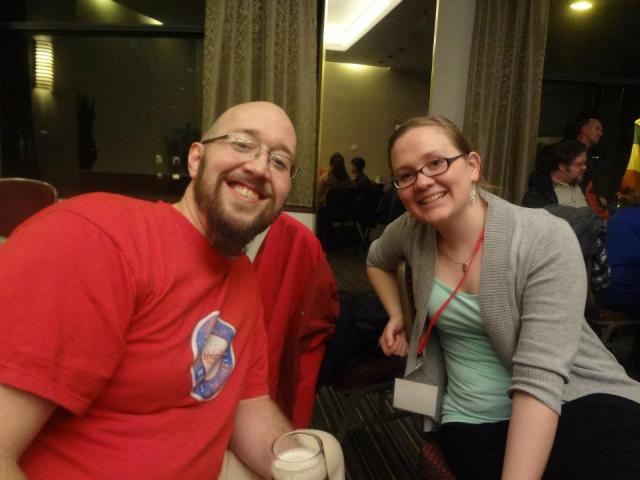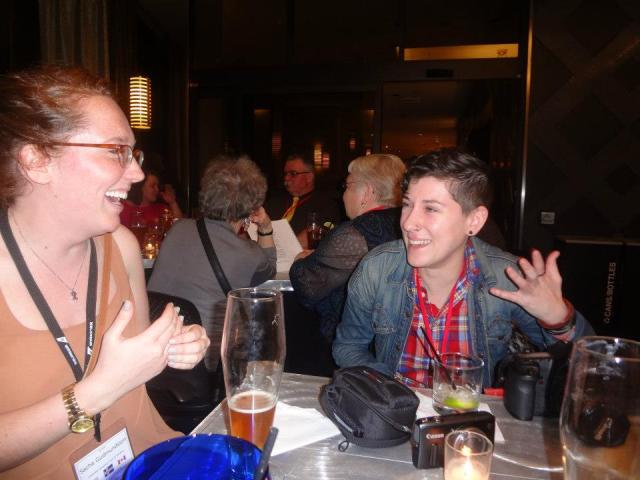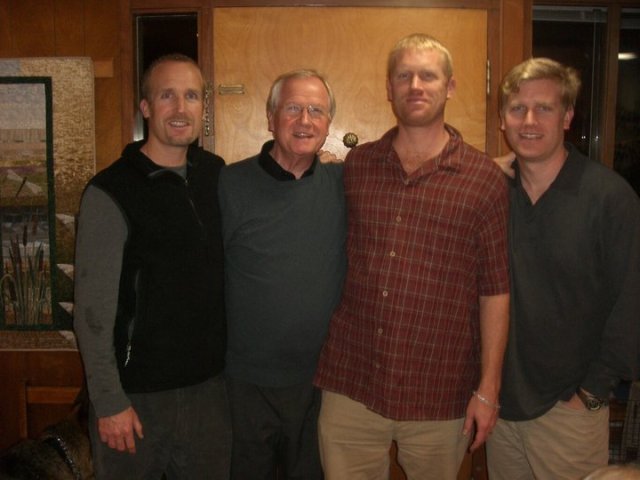This summer, I spent some time poking around timarit.is, a searchable archive of hundreds of Icelandic, Faroese and Greenlandic publications. I found dozens of articles about or mentioning my ancestors, and unlike when I searched this website a couple years ago, this time I could actually read the article reasonably well. The best find was an obituary for my great-grandfather. I was sitting at the kitchen table one evening when I came across it. I called my mom over and showed her, then started roughly translating it aloud for her. I was concentrating so hard that I didn’t look up for a while, but when I did, I saw that she had tears in her eyes. It was one of those beautiful little moments of affirmation when I know that I made the right choice to come here and study Icelandic, even if it doesn’t always make sense on paper.
Anyway, after I read through the article, I searched through our genealogy notebooks and found no English translation (although portions of the article were taken from almanacs and other publications, so paragraphs here and there were familiar), so I decided to try my hand at translating it.
The challenges were many – for instance, old-fashioned language and terminology specific to farming and church life – but the process was rewarding. Not only did I learn more about the Icelandic language, but I learned about the life of my remarkable great-grandfather, who unfortunately was gone more than twenty years before my birth.
I might write a bit more later about the process of translating this article and some of the specific questions and challenges I faced, but for now, I’ll just post my translation along with a link to the original text. I am absolutely an amateur, so if anyone has corrections or suggestions, by all means share them. Many thanks to Páll Baldursson for his assistance with some of the more difficult parts.
Original text (á íslensku): Merkur Íslendingur látinn
—
Distinguished Icelander has passed away
Originally published in the Lögberg-Heimskringla, Thursday, July 20, 1961
As previously reported in the Lögberg-Heimskringla, the distinguished Sveinn Einarsson Westford passed away at a hospital in Bellingham, Washington on Friday, May 12, 1961, at the age of 86 years, five months and seven days. He was born December 5, 1874 at the farm Miðhlíð in Brjánslækur Parish and was christened the 25th of the same month.
Sveinn’s parents were Einar Magnússon Vestfjörð from Skáleyjar in Breiðafjörður and Kristín Jónsdóttir Magnússonar from Tindar in Geiradal, both of good Icelandic stock.
In 1884, at the age of 10, Sveinn came to North America alongside his parents. They settled first in Gardar, North Dakota, then in 1892 moved to the Mouse River area.
It was written about Sveinn’s father, Einar Magnússon, that he was a diligent and practical worker, a great farmer, and a strong figure to behold. The couple quickly prospered, and their home was known as a place of help and benevolence for the less fortunate and a safe refuge for helpless new immigrants. Sveinn and his late brother Jakob grew up in this charitable home, alongside their foster sister Anna, now Mrs. Svanson, assistant housekeeper at Stafholt in Blaine, Washington. Many years ago, something to this effect was written about the brothers: Einar’s sons are Jakob and Sveinn, the most stately of men, of calm temperament, popular, and well-respected by all.
In 1907, Sveinn married the beautiful Helga Þórðardóttir Benediktsson from Dalhús. She passed away several years ago. The young couple settled in the northern part of the Mouse River area among people of another nationality, but when Sveinn got the opportunity, he sold that land and bought a great farm that encompassed forest, meadow and fields.
In those days, many could not imagine taking on a debt of many thousands of dollars, but Sveinn Westford was full of optimism and unwavering faith and was certain that he would have great success in this undertaking. And that’s exactly what happened. Sveinn immediately got down to business cultivating the land and plowing that vast meadow, and experience proved that the work yielded rich fruit. Sveinn became one of the first men to show others what this good, rich earth could produce. He also raised cattle, which proved to be profitable. After just a few years, he had paid for the great land, and the ranch was one of the most beautiful in the area and one of the most flourishing farms in the countryside.
Sveinn the good farmer lived on this land until the government decided to put a large portion of it under water. A number of farmers, including Sveinn Westford, were forced to give up their land. Sveinn showed outstanding diligence in his farming at the Mouse River settlement and earned a wonderful reputation among the residents there.
Sveinn and Helga had eleven children, seven boys and four girls. The sons are:
- Victor, a resident of Seattle, Washington
- Einar, New Port, Pennsylania
- Grímur, Oakland, California
- Oscar, Seattle, Washington
- Fredrick, San Lorenzo, California
- John, Ferndale, Washington
- Sveinn, Bellingham, Washington
Their daughters are:
- Mrs. Christine M. Turnipseed, Newton, Illinois
- Mrs. Jakobina Paulina Hillman, Mountain, North Dakota
- Mrs. Ellen Lunde, Upham, North Dakota
- Mrs. Lillian Cairns, Seattle, Washington
All the children survive their parents and they are, without exception, the most promising people, intelligent, cultured and highly regarded by all who know them. They are all good church folk, raised to be god-fearing and good-mannered.
Within the Icelandic community, Sveinn Westford was among the most pleasant individuals. Alongside his beloved wife, he was involved in anything related to the church. He was a faithful member and for a long time chairman of the Icelandic congregation in Upham, North Dakota.
Twenty-six years ago, Sveinn and his wife and most of their children moved west and settled in the Blaine area, just south of the town. They purchased a beautiful farm and lived there for several years. They immediately joined the Blaine congregation, as did all the children who had accompanied them west. Within the Blaine congregation, Sveinn and Helga proved themselves to be some of the most faithful congregants. In all efforts, Sveinn was encouraging and always willing to give of his time, money and energy.
Sveinn Westford was a strapping man and decided in all that he put his mind to. I, who am writing these few words in his memory, knew Sveinn Westford, his wife and their children very well. The entire family was involved in the church those seven years that I was their priest, and I had the honor of performing church rites for these pleasant folk.
I’ll give one example of Sveinn’s work ethic. In 1940, the church had fallen into disrepair and the interior needed to be painted as soon as possible. Sveinn was on the congregational board as he always was in those years. Sveinn was one of those who took on the most work. We did not have to wait long until the project was completed, because a few days after the repairs were approved at a congregational meeting, Sveinn came with a large group of church members and the work was completed within a few days.
In the parish council, Sveinn always had a lot to say. Everyone trusted him and appreciated his advice, which always proved to be wise.
The Westfords were known for their Icelandic hospitality, both in the Mouse River area and also after they moved to Blaine. The couple were extremely likeable and had many friends, and there were often many at their good and cheerful home. Young people also often gathered there together.
A few years ago, Sveinn sold his farm in Blaine and bought a modest home in Bellingham. It suited the couple well, until their health started to decline, and after a few years in Bellingham Sveinn lost his good wife. Shortly after her death, Sveinn began to lose his sight and eventually he became completely blind. After that point, he lived with several of his children, including his son Victor in Seattle. Sveinn’s daughter, the schoolteacher Mrs. Jakobina Hillman, moved to Seattle and supported her father with her presence, so he was as happy as could be expected. Sveinn was grateful to his children for graciously aiding their helpless father when he most needed it. The last two years of his life, Sveinn lived with his son John, who is married to an American woman. They live in Ferndale, not far from Blaine, and while living there with them, Sveinn’s condition deteriorated and he even became bedridden. His daughter-in-law was extremely kind to him, nursing him and doing all in her power to help him. Sveinn was later moved to the medical wing of Stafholt in Blaine, Washington. After a few days he was moved to the hospital in Bellingham, and there, after just a few hours, he passed away. Thus ended a long and prosperous life.
Sveinn was, in truth, a fortunate man. He was lucky to have such a wonderful wife, who was his anchor in life, and to have so many practical children, who honored their parents and will always honor their memory.
With many friends and family present, Sveinn was laid to rest in Bay View Cemetery on Friday, May 19. Arrangements were taken care of by the John Westford Funeral Home in Bellingham and Guðmundur P. Johnson presided over the funeral.
The death of Sveinn Einarsson Westford is the loss of a distinguished Icelander, who will long be remembered by those who knew him.
May the Lord bless the memory of this good man.
G.P.J.
Original Icelandic text by Guðmundur P. Johnson, 20 July 1961
English translation by Julie Summers, October 2015






